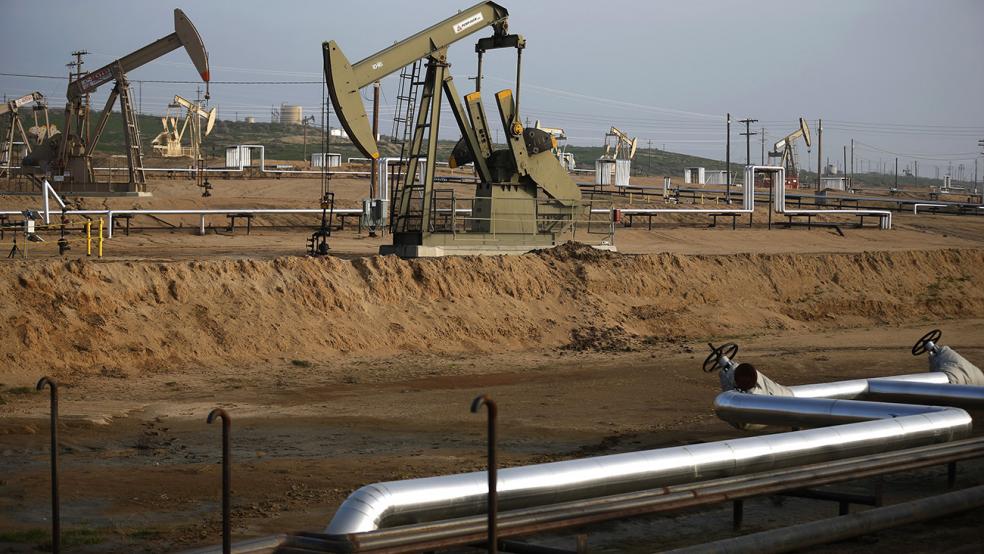If you haven't been watching the market lately, well you haven't really missed much. Since the historic post-election rally fizzled out in December — as the initial euphoria on Wall Street over the surprise election of President Donald Trump gave way to doubts over his immigration policy, questions about the timing of his tax cuts and fears of trade wars — stocks have gone relatively quiet, grinding out incremental new highs. No fuss. No drama.
With the holidays behind us and the fourth-quarter earnings season continuing, investors just can't be bothered. Even the Dow taking the 20,000 level in late January after weeks of teasing has failed to generate all that much excitement. As a result, large-cap stocks have gone more than a month without a 1 percent intra-day move — the longest such streak in history — and nearly three months without a 1 percent decline. No surprise then that sentiment and investor positioning measures are extremely bullish.
But outside of equities, there is action underway. And it suggests stock investors could soon be shaken from their complacency based on what's happening in commodities and energy, in particular.
Related: Ratings Agency Sends a Dire Warning About Trump's Economic Plan
Crude oil looks ready to fall back through the $50-a-barrel threshold amid bearish inventory data, declining energy demand described by Goldman Sachs as recessionary, increased U.S. shale activity, lingering doubts about the efficacy of OPEC's output freeze agreement and the currency effect from fresh strength in the U.S. dollar.
This is "risk off" behavior. Remember, during the 2014-2016 corporate earnings recession, executives blamed a strong U.S. dollar and weak energy prices for the profitability pressure.
It wasn't supposed to be this way.
Late last year, OPEC oil ministers finally agreed to tighten supply for the first time in eight years — an agreement that was first teased last February. West Texas Intermediate ran up to $55 a barrel, returning to early 2015 levels. Demand looked strong as well, evidenced by stronger interest in gas-guzzling trucks and SUVs as Obama-era fuel efficiency mandates looked threatened by Trump.
Yet now things are taking a turn for the worse. Last Tuesday the weekly API oil inventories report was jaw-droppingly bad: Crude stockpiles increased by 14.2 million barrels, five times what was expected, for the largest build since February 2015 and the second-largest build on record.
Related: 15 Things That Will Cost Less in 2017
This came on the heels of a U.S. Energy Information Administration report that cut its 2017 forecast for growth in global oil demand by 10,000 barrels per day to 1.62 million and cut its 2018 estimate by 50,000 to 1.46 million barrels per day while at the same dramatically increasing its 2018 U.S. oil output forecast.
If this comes to fruition and output climbs to the projected 9.53 million barrels per day, it will represent the highest U.S. crude output since 1970 and reveal that U.S. producers are indeed able to quickly adjust marginal output to market prices — effectively neutering OPEC's ability to dictate prices and their own revenues. Trump's support for the U.S. energy sector — his Secretary of State Rex Tillerson is the former CEO of ExxonMobil (XOM) — will only help the increase in American energy output.
The real kicker is what's happening on the demand side, suggesting that the U.S. economy may not be as strong as commonly believed: EIA data showed that the four-week average of gasoline supplied, an implied measure of gasoline demand, fell to 8.2 mbpd. That's the weakest result since February 2012.
Related: Oil Down 2 Percent as Dollar Firms, OPEC Compliance Rate Shrugged Off
Unless the weekly data was erroneous or an outlier, Goldman Sachs analysts said their model matching historic gasoline demand to overall consumer spending suggests that spending is set to drop to levels associated with recessions. IEA data at the end of the week is similarly dour on 2017 energy demand (although the outlook has improved somewhat) and notes non-OPEC production is set to rise.
Energy investors aren't waiting for confirmation, but have already pushed the Energy Select Sector SPDR (XLE) down more than 5 percent from its post-election high, no doubt in anticipation of a looming pullback in oil prices.
One possible reason why crude oil prices haven't taken the plunge just yet has been OPEC's surprisingly high initial compliance with its output cuts, with early data showing 90-plus percent adherence to production caps, led largely by Saudi Arabia.
Of course, this begs the question of how long the oil sheiks will tolerate the loss of the market share they’ve gained against U.S. shale producers since unleashing their price war in 2014; and thus, how quickly they will ramp production back up and push price slower.







